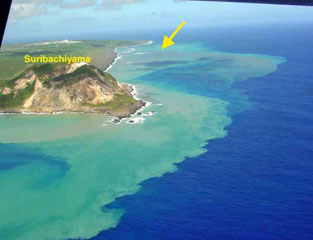Report on Ioto (Japan) — September 1982
Scientific Event Alert Network Bulletin, vol. 7, no. 9 (September 1982)
Managing Editor: Lindsay McClelland.
Ioto (Japan) Small phreatic explosions on NW flank
Please cite this report as:
Global Volcanism Program, 1982. Report on Ioto (Japan) (McClelland, L., ed.). Scientific Event Alert Network Bulletin, 7:9. Smithsonian Institution. https://doi.org/10.5479/si.GVP.SEAN198209-284120
Ioto
Japan
24.751°N, 141.289°E; summit elev. 169 m
All times are local (unless otherwise noted)
Five small phreatic explosions without detonations or recorded seismic events were reported by the Japanese National Research Center for Disaster Prevention. They occurred 9-10 March on the NW shore of the island, producing a new crater N of Asodai Crater (which erupted in 1967, 1969, 1976 and 1978) and "Million Dollar Hole." The three craters lie on the Asodai fault. The ejecta were no larger than 25 cm in diameter and were scattered within 300 m of the new crater. No juvenile material was found, only fragmented older rock.
Geological Summary. Ioto, in the Volcano Islands of Japan, lies within a 9-km-wide submarine caldera. The volcano is also known as Ogasawara-Iojima to distinguish it from several other "Sulfur Island" volcanoes in Japan. The triangular, low-elevation, 8-km-long island narrows toward its SW tip and has produced trachyandesitic and trachytic rocks that are more alkalic than those of other volcanoes in this arc. The island has undergone uplift for at least the past 700 years, accompanying resurgent doming of the caldera; a shoreline landed upon by Captain Cook's surveying crew in 1779 is now 40 m above sea level. The Motoyama plateau on the NE half of the island consists of submarine tuffs overlain by coral deposits and forms the island's high point. Many fumaroles are oriented along a NE-SW zone cutting through Motoyama. Numerous recorded phreatic eruptions, many from vents on the W and NW sides of the island, have accompanied the uplift.
Information Contacts: JMA.

